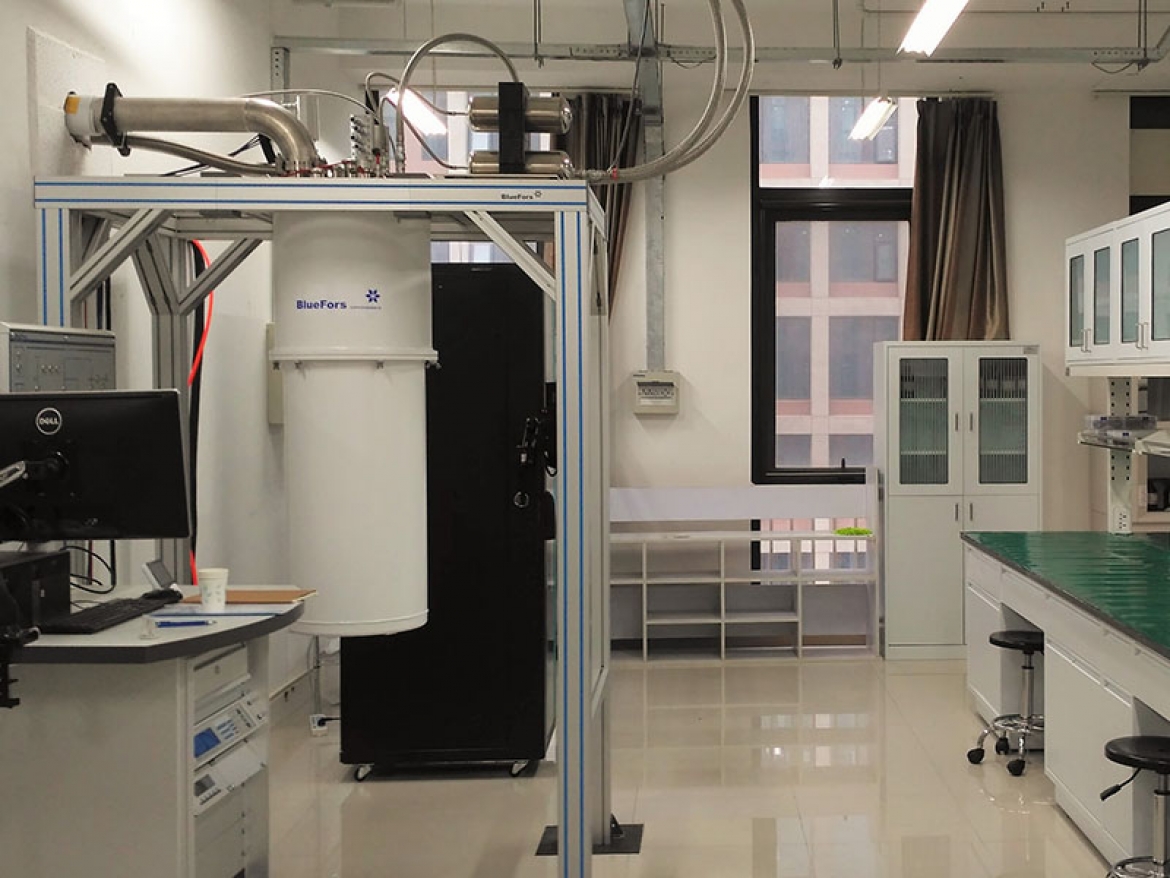Low Temperature Detector Lab near completion
Two large rooms on the 6th floor of the Meng Min Wei Building have been renovated and set up as the new Low Temperature Detector Lab. The construction is now nearly completed. The lab will be used by Prof. Wei Cui’s group to develop superconducting transition-edge sensor (TES) arrays for high throughput, high resolution X-ray imaging spectroscopy in astrophysics. A TES operates as an ultra-sensitive thermometer. It measures the deposited energy of an incident X-ray photon by sensing a tiny rise in the temperature of the absorber (to which it is attached). The absorber temperature recovers, after heat leaks out (to a thermal bath), and the detector is ready for another photon. The accuracy to which a TES measures photon energy is fundamentally limited by thermodynamic fluctuations in the exchange of thermal energy between the absorber and the thermal bath. To achieve good energy resolution, it is necessary to operate the device at cryogenic temperatures (typically
One of the lab rooms is equipped with a Class 10000 cleanroom. It will house a film deposition system, which is dedicate to the growth of Mo/Cu bilayer superconducting films, and a variety of apparatuses for characterizing their mechanical and electrical properties. A film of suitable quality will be used to make a TES array, as well as the associated absorbers, electrical leads, and mechanical supporting structures, in a micro/nano fabrication facility (like the one in the Institute of Microelectronics at Tsinghua). The TES array will then be brought back and characterized for actual applications at cryogenic temperatures in the other room, which houses two cryogen-free refrigerators, a Bluefors dilution refrigerator and a HPD adiabatic demagnetization refrigerator. Ultimately, a large TES array of excellent energy resolution and high pixel uniformity is needed for the Hot Universe Baryon Surveyor (HUBS), a satellite mission that is being conceptualized to significantly advance the studies of baryonic matter in large-scale structures and near galaxies and thus our understanding of the formation and evolution of galaxies.



